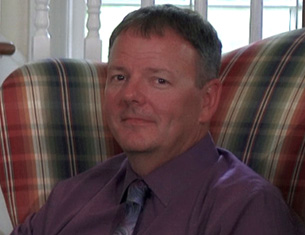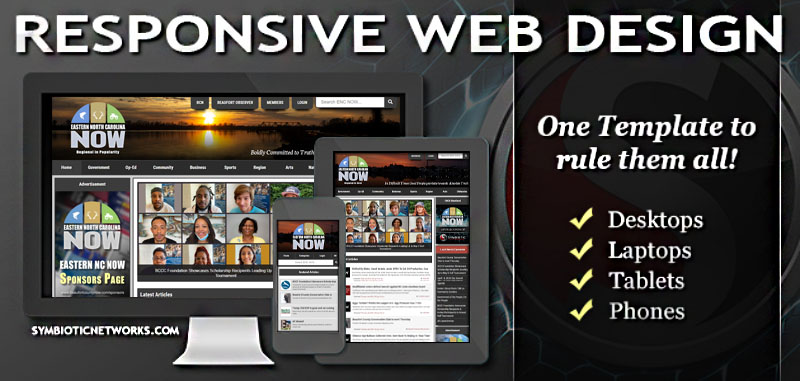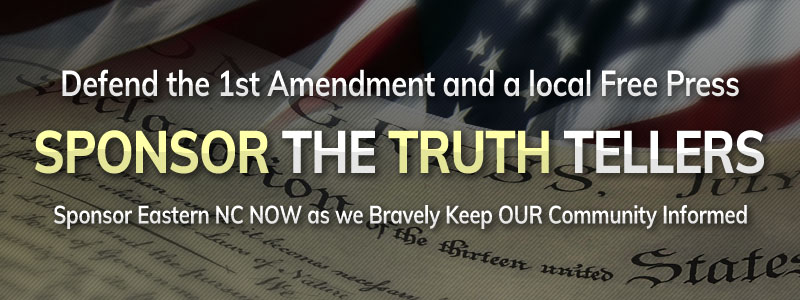Your Public Square Disclosing what is True, what is Real
Progressive Indoctrination in Public Schools Takes Many Forms
At the urging of these groups, schools across the country have also established "safe" rooms for homosexual or sexually confused students, as if they might not be safe from "hate" and "intolerance" elsewhere in the school. In these rooms, identified by inverted pink triangles, students can discuss same-sex attraction or anxiety about sexual orientation with teachers or counselors, who promise a nonjudgmental and sympathetic hearing. Students who drop by for private discussion about their sexual confusion will often be referred, without parental knowledge, to local chapters of gay and lesbian organizations.
In the minds of many adults and parents, homosexuality is an alternative lifestyle, a choice of which gender to be romantically and sexually involved with; it's a matter of free choice. This may explain why many parents are opposed to such aggressive policies in the public school system, even beginning with elementary school - they see such advocacy as a form of recruitment. Even more frustrating to them is the fact that schools that claim to have the best interests for student education in mind have no problem seeing funds going to programs teaching about the LGBTQ agenda when so many public schools fail even to produce minimally literate and numerate graduates. They are equally frustrated that so much emphasis is being placed on such "tolerance" programs and lessons especially when all the evidence suggests that the incidence of self-labeled homosexuality and bisexuality in the population is in fact quite minuscule. According to a 2017 Gallup poll, only 4.5% of adult Americans identified as LGBT with 5.1% of women identifying as LGBT, compared with 3.9% of men. (4.5% + 3.9%) ÷ 2 = 4.5% ]. And according to a poll taken in 2016 by the Williams Institute, an estimated 0.6% of U.S. adults identify as transgender
The article ends by asking these questions: "How many parents, even those not just tolerant of homosexuality but actively sympathetic toward homosexual rights, would really want their teenage children to be seeking out a "unique expression" of sexuality (let alone with their school's help) or learning how to "fist"? How many would want their kindergartners-just figuring out their identities and desperately needing clear-cut categories like "boy" and "girl" to make sense of them-to engage in "non-traditional role play," so that they grow up with warm feelings about transgendered people? Or their elementary school boys and girls exposed to sexual themes that they aren't old enough to understand and that are likely to fill them with anxiety? Parents might well brush off an old-fashioned word and describe it all as, well . . . perverse."
The bottom line is that with all the gender identity, transgenderism, gender fluidity, and LGBTQ polities, school systems will likely have to create a more gender-inclusive classroom environments.
Transgenderism -
A definition and explanation of "transgenderism" from the Planned Parenthood website reads:
Some people feel that the sex (gender) they were assigned at birth doesn't necessarily match their gender identity, or the gender that they feel they are inside. These people are often called "transgender."
Transgender is about gender identity and not biological gender. Transgender is a term that includes the many ways that people's gender identities can be different from the sex they were assigned at birth. There are alot of different terms transgender people use to describe themselves, including the simplified term "trans."
Transgender people express their gender identities in many different ways. Some people use their dress, behavior, and mannerisms to live as the gender that feels right for them. Some people take hormones and may have surgery to change their body so it matches their gender identity. Some transgender people reject the traditional understanding of gender as divided between just "male" and "female," so they identify just as transgender, or genderqueer, genderfluid, or something else.
When people's assigned sex and gender identity are the same, they are called "cisgender."
"Gender dysphoria" is another facet of this issue. Gender dysphoria is a term that psychologists and doctors use to describe the distress, unhappiness, and anxiety that transgender people may feel about the mismatch between their bodies and their gender identity. A person may be formally diagnosed with gender dysphoria in order to receive medical treatment to help them during their "transition."
Psychologists used to call this "gender identity disorder." However, the mismatch between a person's body and gender identity isn't in itself a mental illness (but it can cause emotional distress), and so the term was changed to reflect that.
One's "transgender identity" is different from sexual orientation. People often confuse gender identity with sexual orientation. But being transgender isn't the same thing as being lesbian, gay, or bisexual. Gender identity, whether transgender or cisgender, is about who you are inside as male, female, both, or none of these. Being lesbian, gay, bisexual, or straight describes who you are attracted to romantically, emotionally, and sexually. A transgender person can be gay, lesbian, straight, or bisexual, just like someone who's cisgender. A simple way to think about it is: Sexual orientation is about who you want to be with. Gender identity is about who you are.
Of course, we all remember or should remember an important lesson from Biology class and that that DNA (deoxyribonucleic acid) contains the blueprint for our identity. It codes for all our traits - our gender, our facial features, our body type, our height, our hair color, eye color, the shape of our nose, the overall the health of our body.... everything. It directs us through all the various phases of our life - our development in the womb, our growth through our childhood years, puberty and beyond. It eventually enables us to reproduce and ultimately, it signals our bodies to age and then to wind down. It is a brilliant system and I believe, is direct evidence of intelligence and the intent of our Creator. So when you hear people say that their "gender identify" doesn't coincide with their biological gender or that they want to change their gender, that they believe there are more than two genders or we can change back and forth between genders (gender fluidity), just remember that one's gender identity is permanently encoded in one's DNA; it is stamped at birth - There are only 2 genders. If a person has sex chromosomes XX, then she is a female. If a person has an X and a Y chromosome, then he is a male. A person may want to change the window dressing, they may want to dress differently, change their voice, add body parts they weren't born with, etc but it does NOT change their biological sex. That is forever coded in their DNA. Science cannot ignore the information in one's DNA. Transgenderism and gender fluidity conflict with the defined and permanent laws of nature and biology, and so, to teach these progressive social developments to our children in school is intellectually dishonest, unethical, and confusing.
Even understanding DNA and knowing the biology regarding gender, and disregarding its natural laws, schools continue to teach transgenderism - even to children as young as kindergarteners. Parents of West Hartford Public Schools (WHPS) in Connecticut informed Parents Defending Education (PDE) that the kindergarten reading list in the school district includes the progressive book "Introducing Teddy," a book described at Amazon.com as one that "introduces the youngest readers to understanding gender identity and transition in an accessible and heart-warming story about being true to yourself and being a good friend." Furthermore, the parents complained that Hartford district officials will not allow children to be opted out of the curriculum. In other words, they have usurped the authority of the parents to have a say in what is being taught to their children.
The list of kindergarten books at WHPS also includes "Pink Is for Boys" and "Let's Talk About Race."
The reading list for 4th graders includes book "When Aiden Became a Brother," which is full of gender (specifically, transgender) theory. Aiden, as a child, is convinced that he was born with the wrong gender. In the book, he concludes that his inner self doesn't coincide with his biological gender and the author celebrates his transition" - his 'coming out' to becoming a big brother. It is written convincingly for children, and parents are incensed that such a book has been approved for their young children to read. Parents Defending Education contends that both books are confusing and manipulative and play to a progressive agenda.
As Breitbart News commented: "Teaching elementary students that their parents assigned them their gender at birth but may have gotten it wrong because anatomy is separate from gender is an obscene example of adults using ideology to confuse and manipulate children's minds. The fact that parents are not permitted to opt their children out of this content based in gender ideology is so sinister, it's hard to believe it's even legal."
Gender Fluidity and Pronoun Choice -
Someone who is "gender fluid" is a person whose gender identity (the gender they identify with most) is not fixed. It can change over time or from day-to-day. Such individuals believe that gender is non-binary, meaning that not all humans fit squarely into either the male or female category. Gender, then, is different from biological sex, which refers to the genitalia with which you are born.
Fluidity, therefore, is a form of gender identity or gender expression, rather than a sexual orientation.
As mentioned above, gender fluidity conflicts with the defined and permanent laws of nature and biology, and so, to teach these progressive social developments to our children in school is intellectually dishonest, unethical, and confusing.
Progressive health lessons (including alternative life styles and alternative sex education) -
Children and teenagers confront a barrage of information and situations related to sexuality. Guidance from families and schools is key in fostering teenagers' healthy sexual development and responsible behavior. Far more adolescents are sexually active now than was the case in recent decades. Fifty-six percent (56%) of boys and 50% of girls aged 15-19 report having had sexual intercourse. Every year, nearly one million teenage girls become pregnant, and about 80% of those pregnancies are unintended. Rates of sexually-transmitted diseases, including HIV/AIDS infection, are on the rise among teenagers. The progressive organization, Planned Parenthood believes that comprehensive sexuality education in public school health classes can be critical in giving young people the information and skills they need to make responsible decisions and to protect themselves. By "comprehensive sexuality education," the ACLU means a thorough, accurate curriculum that examines such subjects as human development, relationships, personal skills, sexual behavior and health, including changing norms in our quickly "progressing" society.
Many states sponsor some form of sexuality education through laws, regulations, or recommendations. At present, 19 states require that schools provide sexuality education, and 34 states require instruction about sexually transmitted diseases and/or HIV/AIDS. Although these statistics suggest that sexuality education is widespread in American schools, the quality and comprehensiveness of this education vary considerably. In some places, teachers of sexuality education are prohibited from mentioning topics such as intercourse, masturbation, abortion, homosexuality, or condoms. Currently, only five percent of American students receive truly comprehensive sexuality education.
Diversity & Inclusion -
As mentioned above, equality has given way to "equity" in the US public school system. Following the death of George Floyd last year (May 25, 2020), schools have begun to focus on promoting diversity and inclusion. For example, in Ohio, school districts currently use a program for students centered around justice, equity, diversity, and inclusion, referred to as the "JEDI program." It was designed with great help from one of the state's diversity centers. Most recently, Ohio parents have expressed their opposition over the program, arguing that it is "controversial and political," which is inappropriate for the public school education of children. They say the program supports the teachings of Critical Race Theory, which they are also very much against.
The following excerpt regarding Diversity & Inclusion comes from the US Department of Education, which we all should know is an unconstitutional government entity:
#StrongerTogether
A growing body of research shows that diversity in schools and communities can be a powerful lever leading to positive outcomes in school and in life. Racial and socioeconomic diversity benefits communities, schools, and children from all backgrounds. Today's students need to be prepared to succeed with a more diverse and more global workforce than ever before. Research has shown that more diverse organizations make better decisions with better results. The effects of socioeconomic diversity can be especially powerful for students from low-income families, who, historically, often have not had equal access to the resources they need to succeed. Additionally, Congress recently highlighted the importance of this priority in its "Every Student Succeeds Act" (ESSA) through its inclusion of this priority particularly for Charter Management Organizations.
In light of this growing body of research on socioeconomic diversity, ED has undertaken new efforts to support this prioritization in a number of ways:
Go Back
In the minds of many adults and parents, homosexuality is an alternative lifestyle, a choice of which gender to be romantically and sexually involved with; it's a matter of free choice. This may explain why many parents are opposed to such aggressive policies in the public school system, even beginning with elementary school - they see such advocacy as a form of recruitment. Even more frustrating to them is the fact that schools that claim to have the best interests for student education in mind have no problem seeing funds going to programs teaching about the LGBTQ agenda when so many public schools fail even to produce minimally literate and numerate graduates. They are equally frustrated that so much emphasis is being placed on such "tolerance" programs and lessons especially when all the evidence suggests that the incidence of self-labeled homosexuality and bisexuality in the population is in fact quite minuscule. According to a 2017 Gallup poll, only 4.5% of adult Americans identified as LGBT with 5.1% of women identifying as LGBT, compared with 3.9% of men. (4.5% + 3.9%) ÷ 2 = 4.5% ]. And according to a poll taken in 2016 by the Williams Institute, an estimated 0.6% of U.S. adults identify as transgender
The article ends by asking these questions: "How many parents, even those not just tolerant of homosexuality but actively sympathetic toward homosexual rights, would really want their teenage children to be seeking out a "unique expression" of sexuality (let alone with their school's help) or learning how to "fist"? How many would want their kindergartners-just figuring out their identities and desperately needing clear-cut categories like "boy" and "girl" to make sense of them-to engage in "non-traditional role play," so that they grow up with warm feelings about transgendered people? Or their elementary school boys and girls exposed to sexual themes that they aren't old enough to understand and that are likely to fill them with anxiety? Parents might well brush off an old-fashioned word and describe it all as, well . . . perverse."
The bottom line is that with all the gender identity, transgenderism, gender fluidity, and LGBTQ polities, school systems will likely have to create a more gender-inclusive classroom environments.
Transgenderism -
A definition and explanation of "transgenderism" from the Planned Parenthood website reads:
Some people feel that the sex (gender) they were assigned at birth doesn't necessarily match their gender identity, or the gender that they feel they are inside. These people are often called "transgender."
Transgender is about gender identity and not biological gender. Transgender is a term that includes the many ways that people's gender identities can be different from the sex they were assigned at birth. There are alot of different terms transgender people use to describe themselves, including the simplified term "trans."
Transgender people express their gender identities in many different ways. Some people use their dress, behavior, and mannerisms to live as the gender that feels right for them. Some people take hormones and may have surgery to change their body so it matches their gender identity. Some transgender people reject the traditional understanding of gender as divided between just "male" and "female," so they identify just as transgender, or genderqueer, genderfluid, or something else.
When people's assigned sex and gender identity are the same, they are called "cisgender."
"Gender dysphoria" is another facet of this issue. Gender dysphoria is a term that psychologists and doctors use to describe the distress, unhappiness, and anxiety that transgender people may feel about the mismatch between their bodies and their gender identity. A person may be formally diagnosed with gender dysphoria in order to receive medical treatment to help them during their "transition."
Psychologists used to call this "gender identity disorder." However, the mismatch between a person's body and gender identity isn't in itself a mental illness (but it can cause emotional distress), and so the term was changed to reflect that.
One's "transgender identity" is different from sexual orientation. People often confuse gender identity with sexual orientation. But being transgender isn't the same thing as being lesbian, gay, or bisexual. Gender identity, whether transgender or cisgender, is about who you are inside as male, female, both, or none of these. Being lesbian, gay, bisexual, or straight describes who you are attracted to romantically, emotionally, and sexually. A transgender person can be gay, lesbian, straight, or bisexual, just like someone who's cisgender. A simple way to think about it is: Sexual orientation is about who you want to be with. Gender identity is about who you are.
Of course, we all remember or should remember an important lesson from Biology class and that that DNA (deoxyribonucleic acid) contains the blueprint for our identity. It codes for all our traits - our gender, our facial features, our body type, our height, our hair color, eye color, the shape of our nose, the overall the health of our body.... everything. It directs us through all the various phases of our life - our development in the womb, our growth through our childhood years, puberty and beyond. It eventually enables us to reproduce and ultimately, it signals our bodies to age and then to wind down. It is a brilliant system and I believe, is direct evidence of intelligence and the intent of our Creator. So when you hear people say that their "gender identify" doesn't coincide with their biological gender or that they want to change their gender, that they believe there are more than two genders or we can change back and forth between genders (gender fluidity), just remember that one's gender identity is permanently encoded in one's DNA; it is stamped at birth - There are only 2 genders. If a person has sex chromosomes XX, then she is a female. If a person has an X and a Y chromosome, then he is a male. A person may want to change the window dressing, they may want to dress differently, change their voice, add body parts they weren't born with, etc but it does NOT change their biological sex. That is forever coded in their DNA. Science cannot ignore the information in one's DNA. Transgenderism and gender fluidity conflict with the defined and permanent laws of nature and biology, and so, to teach these progressive social developments to our children in school is intellectually dishonest, unethical, and confusing.
Even understanding DNA and knowing the biology regarding gender, and disregarding its natural laws, schools continue to teach transgenderism - even to children as young as kindergarteners. Parents of West Hartford Public Schools (WHPS) in Connecticut informed Parents Defending Education (PDE) that the kindergarten reading list in the school district includes the progressive book "Introducing Teddy," a book described at Amazon.com as one that "introduces the youngest readers to understanding gender identity and transition in an accessible and heart-warming story about being true to yourself and being a good friend." Furthermore, the parents complained that Hartford district officials will not allow children to be opted out of the curriculum. In other words, they have usurped the authority of the parents to have a say in what is being taught to their children.
The list of kindergarten books at WHPS also includes "Pink Is for Boys" and "Let's Talk About Race."
The reading list for 4th graders includes book "When Aiden Became a Brother," which is full of gender (specifically, transgender) theory. Aiden, as a child, is convinced that he was born with the wrong gender. In the book, he concludes that his inner self doesn't coincide with his biological gender and the author celebrates his transition" - his 'coming out' to becoming a big brother. It is written convincingly for children, and parents are incensed that such a book has been approved for their young children to read. Parents Defending Education contends that both books are confusing and manipulative and play to a progressive agenda.
As Breitbart News commented: "Teaching elementary students that their parents assigned them their gender at birth but may have gotten it wrong because anatomy is separate from gender is an obscene example of adults using ideology to confuse and manipulate children's minds. The fact that parents are not permitted to opt their children out of this content based in gender ideology is so sinister, it's hard to believe it's even legal."
Gender Fluidity and Pronoun Choice -
Someone who is "gender fluid" is a person whose gender identity (the gender they identify with most) is not fixed. It can change over time or from day-to-day. Such individuals believe that gender is non-binary, meaning that not all humans fit squarely into either the male or female category. Gender, then, is different from biological sex, which refers to the genitalia with which you are born.
Fluidity, therefore, is a form of gender identity or gender expression, rather than a sexual orientation.
As mentioned above, gender fluidity conflicts with the defined and permanent laws of nature and biology, and so, to teach these progressive social developments to our children in school is intellectually dishonest, unethical, and confusing.
Progressive health lessons (including alternative life styles and alternative sex education) -
Children and teenagers confront a barrage of information and situations related to sexuality. Guidance from families and schools is key in fostering teenagers' healthy sexual development and responsible behavior. Far more adolescents are sexually active now than was the case in recent decades. Fifty-six percent (56%) of boys and 50% of girls aged 15-19 report having had sexual intercourse. Every year, nearly one million teenage girls become pregnant, and about 80% of those pregnancies are unintended. Rates of sexually-transmitted diseases, including HIV/AIDS infection, are on the rise among teenagers. The progressive organization, Planned Parenthood believes that comprehensive sexuality education in public school health classes can be critical in giving young people the information and skills they need to make responsible decisions and to protect themselves. By "comprehensive sexuality education," the ACLU means a thorough, accurate curriculum that examines such subjects as human development, relationships, personal skills, sexual behavior and health, including changing norms in our quickly "progressing" society.
Many states sponsor some form of sexuality education through laws, regulations, or recommendations. At present, 19 states require that schools provide sexuality education, and 34 states require instruction about sexually transmitted diseases and/or HIV/AIDS. Although these statistics suggest that sexuality education is widespread in American schools, the quality and comprehensiveness of this education vary considerably. In some places, teachers of sexuality education are prohibited from mentioning topics such as intercourse, masturbation, abortion, homosexuality, or condoms. Currently, only five percent of American students receive truly comprehensive sexuality education.
Diversity & Inclusion -
As mentioned above, equality has given way to "equity" in the US public school system. Following the death of George Floyd last year (May 25, 2020), schools have begun to focus on promoting diversity and inclusion. For example, in Ohio, school districts currently use a program for students centered around justice, equity, diversity, and inclusion, referred to as the "JEDI program." It was designed with great help from one of the state's diversity centers. Most recently, Ohio parents have expressed their opposition over the program, arguing that it is "controversial and political," which is inappropriate for the public school education of children. They say the program supports the teachings of Critical Race Theory, which they are also very much against.
The following excerpt regarding Diversity & Inclusion comes from the US Department of Education, which we all should know is an unconstitutional government entity:
#StrongerTogether
A growing body of research shows that diversity in schools and communities can be a powerful lever leading to positive outcomes in school and in life. Racial and socioeconomic diversity benefits communities, schools, and children from all backgrounds. Today's students need to be prepared to succeed with a more diverse and more global workforce than ever before. Research has shown that more diverse organizations make better decisions with better results. The effects of socioeconomic diversity can be especially powerful for students from low-income families, who, historically, often have not had equal access to the resources they need to succeed. Additionally, Congress recently highlighted the importance of this priority in its "Every Student Succeeds Act" (ESSA) through its inclusion of this priority particularly for Charter Management Organizations.
In light of this growing body of research on socioeconomic diversity, ED has undertaken new efforts to support this prioritization in a number of ways:
- The Department's Investing in Innovation, Opening Doors, Expanding Opportunities Program, Magnet Schools Assistance Program and Charter Schools Program competitions each include a focus on fostering socioeconomic diversity in schools.
- The Department published a new supplemental priority for discretionary grant programs that support socioeconomic diversity strategies in the future, starting with fiscal year 2016.
- The Department has solicited feedback on supporting socioeconomic diversity as a strategy to turnaround low-performing schools through its School Improvement Grants program.
- Socioeconomic diversity is now a focus area of the Department's Equity Assistance Centers. These regional centers provide technical assistance to school districts to promote equal educational opportunities.
- These efforts build on President Obama's Stronger Together proposal-a voluntary program to support the development, implementation, and expansion of community-driven strategies to increase socioeconomic diversity in America's public schools.
- The Department will significantly expand funding to a number of distressed communities across the nation through implementing comprehensive cradle-to-college-and-career Promise Neighborhoods
- The Department published Improving Outcomes for All Students: Strategies and Considerations to Increase Student Diversity [PDF, 360KB], an action-oriented summary of considerations when embarking on efforts to increase student diversity, starting with possible steps to consider when conducting a diversity needs assessment and planning for implementation. Potential diversity strategies and a few examples from the field are included, as well as thoughts on efforts to sustain an inclusive environment once diversity strategies are being implemented.
| Myocarditis up 75% in Germany, 31% in France since mRNA vaccines given | Local News & Expression, Editorials, For Love of God and Country, Op-Ed & Politics | Top Tech Companies Then and Now |
























